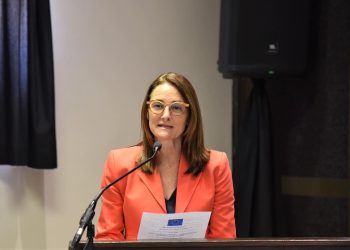
The Namibia Financial Institutions Supervisory Authority (NAMFISA) says global events, particularly major disasters impacting reinsurance costs, influence the country’s insurance market and local premiums.
In an interview, NAMFISA Chief Executive Officer Kenneth Matomola explained that the global reinsurance market is interconnected, meaning that catastrophic events such as hurricanes, earthquakes, and wildfires abroad can affect reinsurance pricing worldwide, including in Namibia.
“When reinsurers experience substantial claim payouts due to large-scale disasters, they may adjust their pricing models to recover losses and manage future risks. This can lead to increased reinsurance costs for Namibian insurers,†he said.
Matomola noted that during “hard market cycles†periods when reinsurance costs rise due to large losses and financial pressures, local insurers may raise premiums for policyholders to offset these costs.
He said the impact on Namibia’s premiums, however, depends on factors such as the country’s risk profile, the specific reinsurance arrangements of insurers, and the competitive market dynamics.
The CEO also explained that insurers could opt to stop underwriting certain risks linked to catastrophic global events.
“As reinsurance costs rise, Namibian insurers may pass on some of these costs to policyholders in the form of higher premiums,†Matomola said.
Regarding climate-related disasters, NAMFISA has not yet observed a direct correlation between international climate events and claims processing or payouts within Namibia. However, Matomola pointed out that there are indirect effects.
“Large-scale climate disasters globally can lead to increased reinsurance costs, which may impact local insurers’ ability to negotiate favourable terms,†he explained. This, in turn, could influence local claims management practices.
Additionally, delays in claims processing may occur if Namibian insurers rely on international reinsurers, which could face high claim volumes.
“While this does not directly affect claim payouts, it could influence future claims handling and underwriting standards,†Matomola added.
NAMFISA, which is responsible for ensuring the stability of Namibia’s insurance sector, has implemented several regulatory measures to mitigate risks arising from global fluctuations. These include maintaining capital buffers for insurers to absorb financial shocks.
“Insurers are required to hold a minimum level of capital to ensure they can settle obligations to policyholders,†Matomola said, citing the Long-term and Short-term Insurance Acts.
Additionally, under the Financial Institutions Markets Act (FIMA), a risk-based capital framework will ensure that insurers hold capital proportional to the risks they underwrite.
The CEO noted that NAMFISA’s regulatory oversight extends to market surveillance through inspections and interventions, including enhanced reporting requirements and capital adequacy adjustments when necessary.
“These measures collectively enhance the resilience of Namibia’s insurance sector against external market shocks. NAMFISA also actively engages with global and regional insurance bodies to monitor risks. As a member of the International Association of Insurance Supervisors (IAIS) and the Committee of Insurance, Securities, and Non-Banking Financial Authorities (CISNA), NAMFISA aligns itself with international best practices,†Matomola said.
Moreover, Matomola, who serves as the Chairperson of CISNA, explained that these engagements help ensure Namibia’s insurance sector remains resilient.
He was recently appointed to the executive committee of the IAIS, underscoring NAMFISA’s role in global regulatory discussions.











